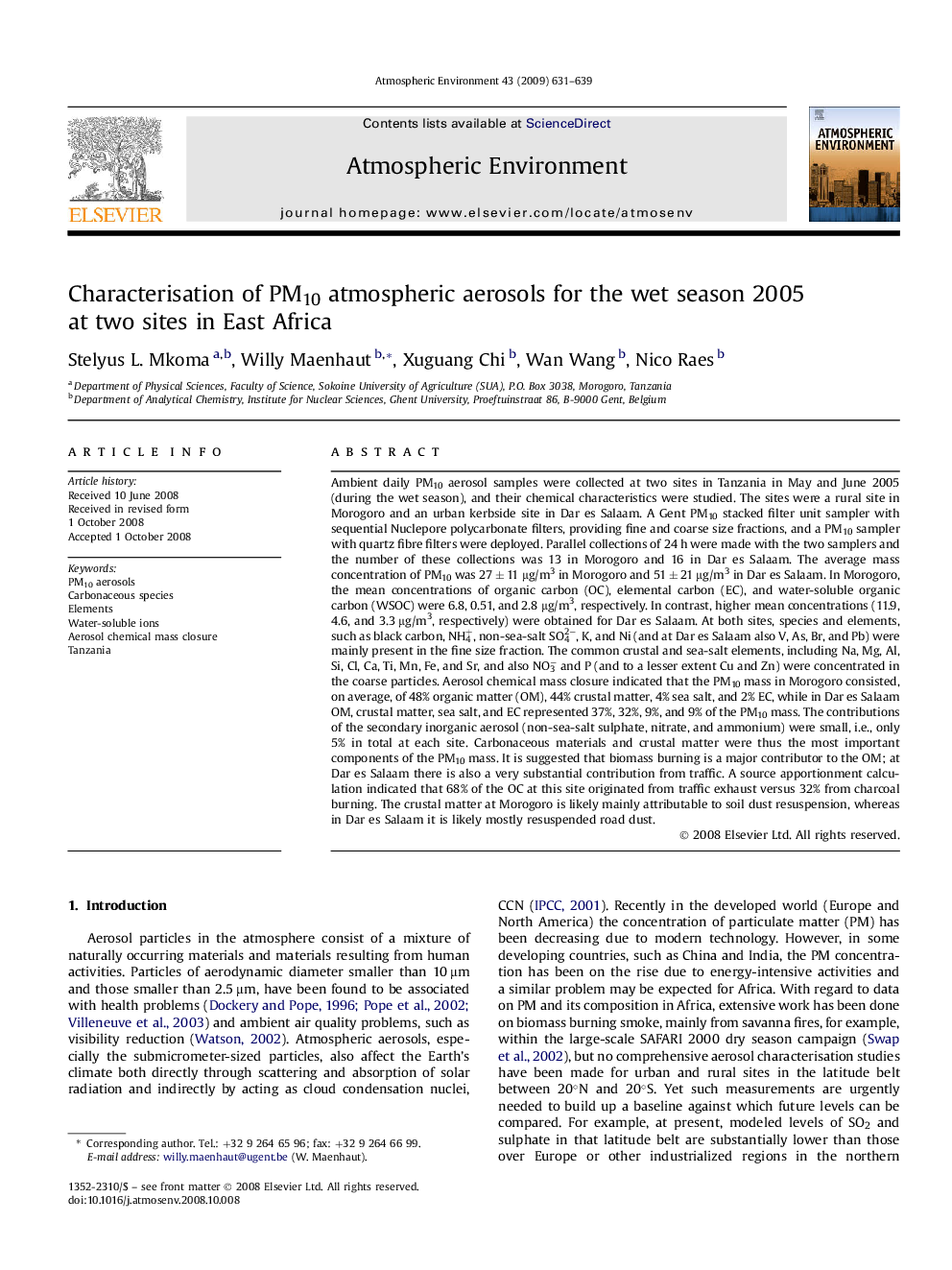| کد مقاله | کد نشریه | سال انتشار | مقاله انگلیسی | نسخه تمام متن |
|---|---|---|---|---|
| 4442293 | 1311145 | 2009 | 9 صفحه PDF | دانلود رایگان |

Ambient daily PM10 aerosol samples were collected at two sites in Tanzania in May and June 2005 (during the wet season), and their chemical characteristics were studied. The sites were a rural site in Morogoro and an urban kerbside site in Dar es Salaam. A Gent PM10 stacked filter unit sampler with sequential Nuclepore polycarbonate filters, providing fine and coarse size fractions, and a PM10 sampler with quartz fibre filters were deployed. Parallel collections of 24 h were made with the two samplers and the number of these collections was 13 in Morogoro and 16 in Dar es Salaam. The average mass concentration of PM10 was 27 ± 11 μg/m3 in Morogoro and 51 ± 21 μg/m3 in Dar es Salaam. In Morogoro, the mean concentrations of organic carbon (OC), elemental carbon (EC), and water-soluble organic carbon (WSOC) were 6.8, 0.51, and 2.8 μg/m3, respectively. In contrast, higher mean concentrations (11.9, 4.6, and 3.3 μg/m3, respectively) were obtained for Dar es Salaam. At both sites, species and elements, such as black carbon, NH4+, non-sea-salt SO42−, K, and Ni (and at Dar es Salaam also V, As, Br, and Pb) were mainly present in the fine size fraction. The common crustal and sea-salt elements, including Na, Mg, Al, Si, Cl, Ca, Ti, Mn, Fe, and Sr, and also NO3− and P (and to a lesser extent Cu and Zn) were concentrated in the coarse particles. Aerosol chemical mass closure indicated that the PM10 mass in Morogoro consisted, on average, of 48% organic matter (OM), 44% crustal matter, 4% sea salt, and 2% EC, while in Dar es Salaam OM, crustal matter, sea salt, and EC represented 37%, 32%, 9%, and 9% of the PM10 mass. The contributions of the secondary inorganic aerosol (non-sea-salt sulphate, nitrate, and ammonium) were small, i.e., only 5% in total at each site. Carbonaceous materials and crustal matter were thus the most important components of the PM10 mass. It is suggested that biomass burning is a major contributor to the OM; at Dar es Salaam there is also a very substantial contribution from traffic. A source apportionment calculation indicated that 68% of the OC at this site originated from traffic exhaust versus 32% from charcoal burning. The crustal matter at Morogoro is likely mainly attributable to soil dust resuspension, whereas in Dar es Salaam it is likely mostly resuspended road dust.
Journal: Atmospheric Environment - Volume 43, Issue 3, January 2009, Pages 631–639